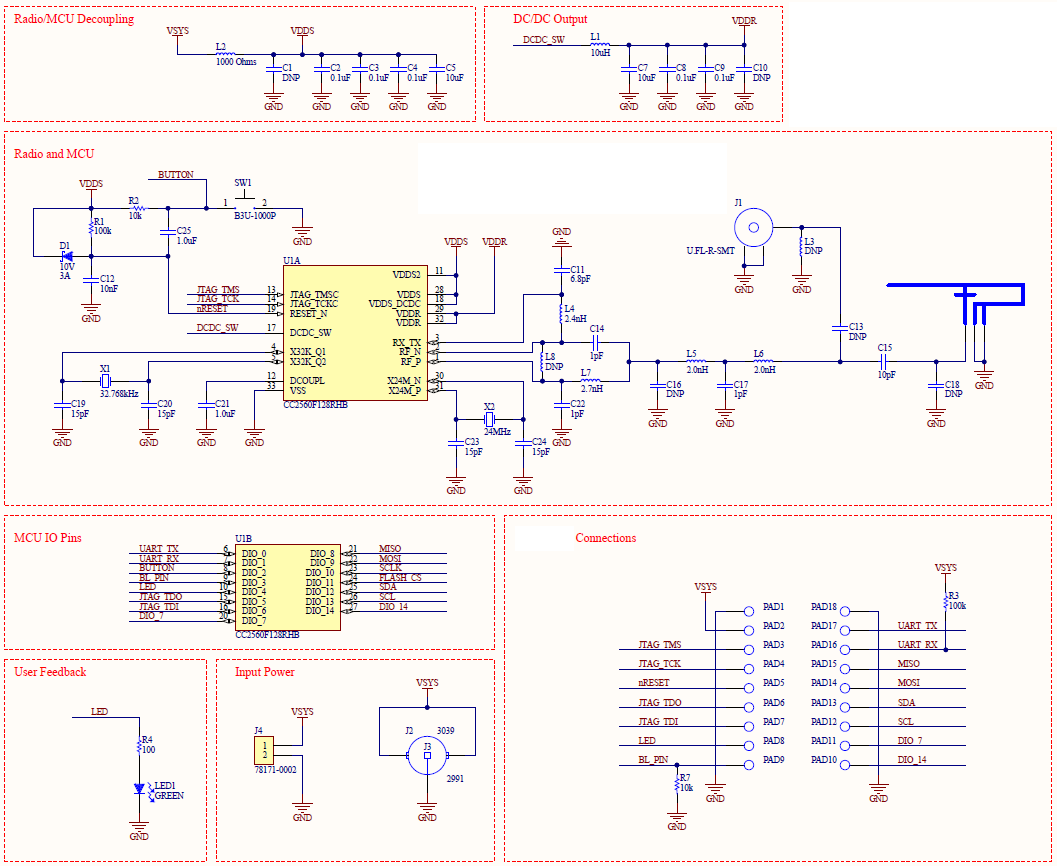I am utilizing the bootloader functionality where I'm turning on the back door entry, and using DIO3 set to active high for entry. I have an external 10k resistor pulling this pin low to set the normal state. What I’m seeing is that when the CC2650 first powers on or gets a reset, DIO3 glitches high, putting it into bootloader mode. I changed the pull down to 7.5k, and it seems to work as expected (boots from flash). I’m a bit skeptical of blindly accepting this change, because I’m not confident that it solves the problem in all scenarios since I don’t know what’s causing the glitch in the first place.
The data sheet states that this pin is set to default input with no pull ups enabled. So, what could be causing this?
Could anyone provide any insight into this?


